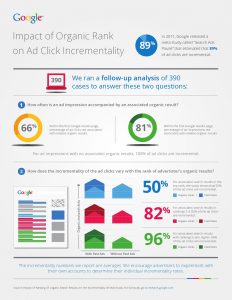Today, the success and growth of any business heavily rely on the ability to maintain a strong online presence. In this digital age, where people turn to search engines like Google, Bing, and Yahoo for finding products, services and information, having a website is simply not enough. To effectively reach your target audience, increase brand visibility, and drive organic traffic, investing in Search Engine Optimization (SEO) is paramount.
SEO is not a new buzzword, but it has evolved significantly over the years. It encompasses a range of strategies and best practices that aim to improve your website’s visibility on search engine results pages (SERPs). This goes beyond simply optimizing your website’s content; it involves enhancing your website’s structure, speed, and user experience to deliver the best possible results. In this blog post, we will explore some crucial aspects of SEO, providing you with essential insights that will enable you to craft a winning SEO strategy and take your business to new heights.
1. Understanding the Role of SEO in Your Business
So, how does SEO fit into your overall business and marketing strategy? To put it simply, SEO makes your website more visible to search engines and the online community. By adopting effective SEO practices, your website has the potential to rank higher on SERPs, thus increasing its exposure to potential customers. This, in turn, can drive more traffic to your website, raise brand awareness, and ultimately boost sales.
Implementing a successful SEO campaign requires optimizing different aspects of your web presence. This includes on-page SEO, technical SEO, off-page SEO, and the utilization of local and mobile SEO techniques. Each of these components plays a vital role in helping search engines understand what your website is about and determining where it belongs in the search ecosystem.
2. On-Page SEO: Optimizing Content and Website Structure
On-page SEO focuses on optimizing content and ensuring your website structure facilitates a smooth user experience. Firstly, let’s dive into content optimization. A well-optimized piece of content revolves around relevancy, quality, and engagement. Start by conducting thorough keyword research, identifying phrases and LSI keywords that are relevant to your target audience. This will help search engines understand your content and rank it accordingly.
When incorporating keywords, it is important to avoid keyword stuffing. Instead, focus on writing high-quality, informative content that provides value to your readers. Utilize your primary keyword naturally throughout the content, but also integrate variations of it through the inclusion of LSI keywords. These LSI keywords, or latent semantic indexing keywords, act as synonyms that help establish the context and theme of your content. By diversifying your keyword strategy, you signal to search engines that your content is comprehensive and authoritative.
In addition to content optimization, pay attention to your website’s structure and technical aspects. Utilize search engine-friendly URLs that are descriptive and user-friendly. Optimize your page titles, meta descriptions, and heading tags by incorporating relevant keywords. Make sure your website is fast-loading and mobile-responsive, as search engines prioritize websites that provide a seamless user experience across all devices. Conduct regular website audits to identify and fix any technical issues that might hinder your website’s performance and indexability.
3. Technical SEO: Making Your Website Search Engine Friendly
Technical SEO refers to the process of optimizing the technical aspects of your website to improve its search engine readability and indexability. Taking care of technical SEO ensures that search engines can crawl and understand your website’s content, leading to better indexing and higher rankings. Here are some key technical SEO practices to implement:
-
Optimize website load time: A slow-loading website not only negatively impacts user experience but also leads to decreased search engine visibility. Compress image files, remove unnecessary plugins, enable browser caching, and leverage content delivery networks (CDNs) to improve website speed.
-
Improve website architecture: Make your website structure clear, intuitive, and easy to navigate. Create an XML sitemap and submit it to search engines to help them understand the structure and organization of your website, ultimately improving crawlability.
-
Optimize robots.txt file: Use the robots.txt file to instruct search engine crawlers on how to interact with certain parts of your website. This will help you avoid any duplicate content issues or indexation of irrelevant pages.
-
Implement structured data markup: By adding structured data markup in the form of Schema.org, you provide search engines with clear and enhanced information about your website’s content, resulting in rich search snippets and improved click-through rates.
-
Ensure mobile-friendliness: With a significant portion of searches conducted on mobile devices, having a mobile-responsive website is crucial. Search engines prioritize mobile-friendly websites, so making yours responsive and intuitive is imperative for successful SEO.
4. Off-Page SEO: Enhancing Online Authority and Reputation
Off-page SEO complements your on-page efforts and involves strategies to enhance your website’s online authority and reputation. Building backlinks is a crucial element of off-page SEO. Backlinks, or inbound links, act as votes of confidence from other websites, indicating to search engines that your website is trustworthy and relevant. However, it’s important to note that not all backlinks are created equal. The quality, relevance, and authority of the linking domains are of utmost importance.
To build a diverse and authoritative backlink profile, engage in strategies such as guest blogging, creating valuable and shareable content, and fostering relationships with influencers and industry publications. Be cautious of participating in link schemes or acquiring low-quality links, as search engines heavily penalize such practices. It is critical to focus on organic and natural link-building techniques that prioritize relevancy and value.
Moreover, off-page SEO encompasses social media marketing, social bookmarking, and online reputation management. Create and maintain a strong social media presence to engage with your audience, drive traffic, and encourage social sharing. Active participation on relevant social bookmarking platforms can also boost your website’s visibility and authority.
5. Local and Mobile SEO: Targeting Your Local Audience
For businesses with physical locations or those targeting specific geographic areas, local and mobile SEO serve as essential tools. By optimizing for local search, you increase your chances of showing up in location-based search results and capitalize on the growing number of “near me” searches. Here are some key strategies for improving local and mobile SEO:
-
Optimize your Google My Business (GMB) profile: Claiming and verifying your GMB profile is crucial for local SEO. Fill in all relevant information, such as location, hours of operation, phone number, and images.
-
Acquire online reviews: Positive reviews and ratings on platforms like Google, Yelp, and industry-specific directories can significantly impact local search rankings. Encourage satisfied customers to leave reviews and promptly address negative feedback.
-
Ensure consistent NAP information: NAP (Name, Address, Phone number) consistency across your website, GMB profile, and other online directories is vital for local SEO. Ensure all instances of your NAP are accurate and up to date.
-
Implement location-based keywords: Incorporate location-specific keywords throughout your website content, URL structure, and meta information to increase visibility in local searches.
-
Optimize for mobile devices: As mentioned earlier, having a mobile-responsive website is necessary for overall SEO success. But for local SEO, it is especially crucial, as mobile devices are increasingly used to conduct “near me” searches.






